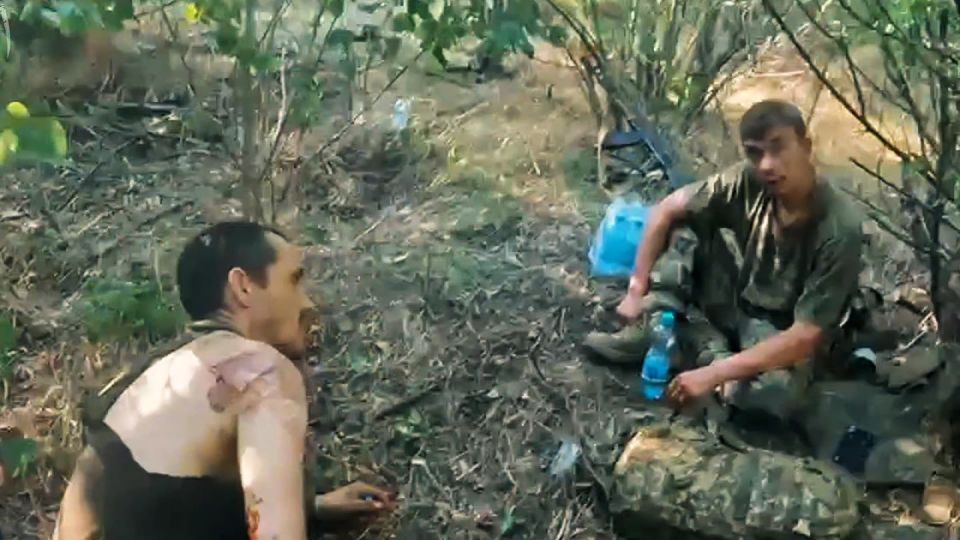The silent, moonless black is broken only by the whirr above of a Russian drone.
Dmytro is yet to receive any patients at his tiny two-bed field hospital near Pokrovsk, and that is not a good outcome any more. Dawn begins to break – the twilight in which evacuation of the wounded from the front lines is safest – but still none arrive, and the enemy drones swirl incessantly above.
“We have a very difficult situation with evacuation,” said Dmytro. “Many of the injured have to wait days. For Russian drone pilots, it is an honor for them when they kill medics and the injured.”
This night, the frontline wounded do not arrive. The saturation of Moscow’s drone in the skies above – already palpable at this stabilization point 12 kilometers (7 miles) from the Russians – has likely made it impossible for even armored vehicles to safely extract the injured. Up the road, the fight rages for the key town of Pokrovsk – in the Kremlin’s crosshairs for months, but now at risk of encirclement.
Across eastern Ukraine, Russia’s tiny gains are adding up. It is capitalizing on a series of small advances and throwing significant resources into an emerging summer offensive, one that risks reshaping control over the front lines.
Over four days reporting in the villages behind Kostiantynivka and Pokrovsk – two of the most embattled Ukrainian towns in Donetsk region – CNN witnessed the swift change in control of territory. Russian drones were able to penetrate deep into areas Kyiv’s forces once relied upon as oases of calm, and troops struggled to find the personnel and resources to halt a persistent enemy advance.
A Ukrainian artilleryman carries a shell as he prepares to fire a self-propelled howitzer towards Russian troops near the city of Kostiantynivka, in Ukraine’s Donetsk region, on July 5. – Viacheslav Ratynsky/Reuters
The Russian momentum comes as US President Donald Trump radically shortened his deadline for Russian President Vladimir Putin to make peace from 50 to up to 12 days. Trump expressed said he was ”very disappointed” in Putin and suggested the Kremlin head had already decided not to entertain the ceasefire the US and its European allies have demanded for months.
The reduced timeframe was welcomed by Kyiv and may provide a greater sense of urgency in Western capitals over diplomatic or military support for Ukraine. But it seems unlikely to alter Moscow’s course, where its superior manpower, tolerance for casualties, and vast military production line is beginning to reap dividends. Ukraine’s President Volodymyr Zelensky said last week Russian forces were “not advancing,” but acknowledged the circumstances across the frontline were “tough.”
The sense of an evolving crisis was most acute around the town of Pokrovsk, unsuccessfully assaulted by Moscow for months at great cost in Russian life. One Ukrainian commander serving near the town described “a very bad scenario,” in which troops in the adjoining town to Pokrovsk, Myrnohrad, risked “being surrounded.” The officer added Russians had already moved into the nearby village of Rodynske, and were on the edges of Biletske, endangering the supply line for Ukrainian troops inside Pokrovsk – assessments confirmed by a Ukrainian police officer and another Ukrainian soldier to CNN Tuesday.
The commander, who like many officials spoke on condition of anonymity discussing a sensitive topic, said they feared a siege was likely, similar to Avdiivka and Vuhledar last year, where “we held out to the last and lost both cities and people as a result.”
Viktor Tregubov, a spokesman for the Khortytsia group of forces active in the area, told state television on Tuesday there “is constant pressure all along the entire eastern front. Right now, it’s absolutely everywhere.” He said Russian troops assaulted mostly on foot. “If someone is killed, others immediately follow.”
While Moscow’s forces have made only incremental gains over recent months – seizing small settlements to little strategic avail – the pace of their advance has accelerated, according to open-source mapping by DeepState. More perilously for Kyiv, recent progress has been strategically advantageous, making the encirclement of Pokrovsk, Kostiantynivka, and Kupiansk to the north, a palpable threat in the weeks ahead.

Burnt cars lie in the street as civilians are evacuated from Pokrovsk, Ukraine, by police on June 19. – Kostiantyn Liberov/Libkos/Getty Images
The fall of these three towns would create three separate crises for Kyiv. Firstly, they are the urban areas from which Ukraine defends the remainders of the Donetsk region it controls, without which its troops lack hubs for shelter and resupply. Secondly, their loss to Moscow would free up a significant number of Russian forces to push hard onto Kramatorsk and Sloviansk – the largest Donetsk towns still under Ukrainian control. Thirdly, this loss would leave Kyiv’s forces exposed, defending the mostly open agricultural land – with few towns in the way – between the Donetsk region and its key city of Dnipro.
The pace of Moscow’s advance – or at least the growing penetration of their attack drones into civilian areas – was witnessed by CNN in the eastern town of Dobropilia on Tuesday. The town came under sustained attack by Russian drones two weeks ago, hitting multiple civilian targets. Locals, fearfully awaiting police evacuation in the town, looked anxiously up to the sky, and said the threat from drones had quickly grown in the last few days.
A police official expressed surprise at the swift unravelling of Ukrainian control, and told CNN the civilian bus service to the city abruptly ended Monday, because of the security situation, leaving locals able to leave in armored police vans, or their own vehicles. On Saturday, local officials advised parents to evacuate their children themselves. But by Tuesday, they were ferrying out children and residents by the dozen. One elderly resident of the village of Biletske, evacuated on Tuesday, said his house had been set on fire by a drone attack on Monday, and then again on Tuesday.
Kyiv also faces an acute challenge in the town of Kostiantynivka, where its forces saw swift Russian advances in the past week to the south east and south west. Russian FPV attack drones can easily target vehicles inside the town, and killed the driver of a civilian van on Sunday, despite the explosive on the device not detonating.
Vasyl, a commander with the 93rd Mechanized brigade, said he had not been sent new personnel for eight months, and was forced to resupply frontline positions of only two men with drones, airlifting in food, water and ammunition.
“No one wants to fight”, he said. “The old personnel are left, they are tired and want to be replaced, but no one is replacing them.” He blamed Ukrainian officers for giving inaccurate reports of the front line to their superiors. “A lot of things are not communicated and are hidden,” he said. “We don’t communicate a lot of things to our state. Our state doesn’t communicate a lot of things to the people.”
Further north, near Kupiansk, about 60 miles east of Ukraine’s second city Kharkiv, Russian troops have raced over the town’s north, threatening a key supply road for Ukrainian forces to its West, taking the village of Radkivka. A Ukrainian source in the city described the situation as “very fast moving,” and Russian analysts have said their forces are in the town’s outskirts.
The accumulative effect of a Ukrainian manpower crisis, the turbulence of Kyiv’s relationship with the Trump White House, and uncertain supplies of weaponry, are a perfect storm that has broken in the face of the vigor and persistence of a Russian summer offensive, whose progress is no longer incremental but is reshaping the conflict and bringing Putin closer to some of his goals fast.
For more CNN news and newsletters create an account at CNN.com

